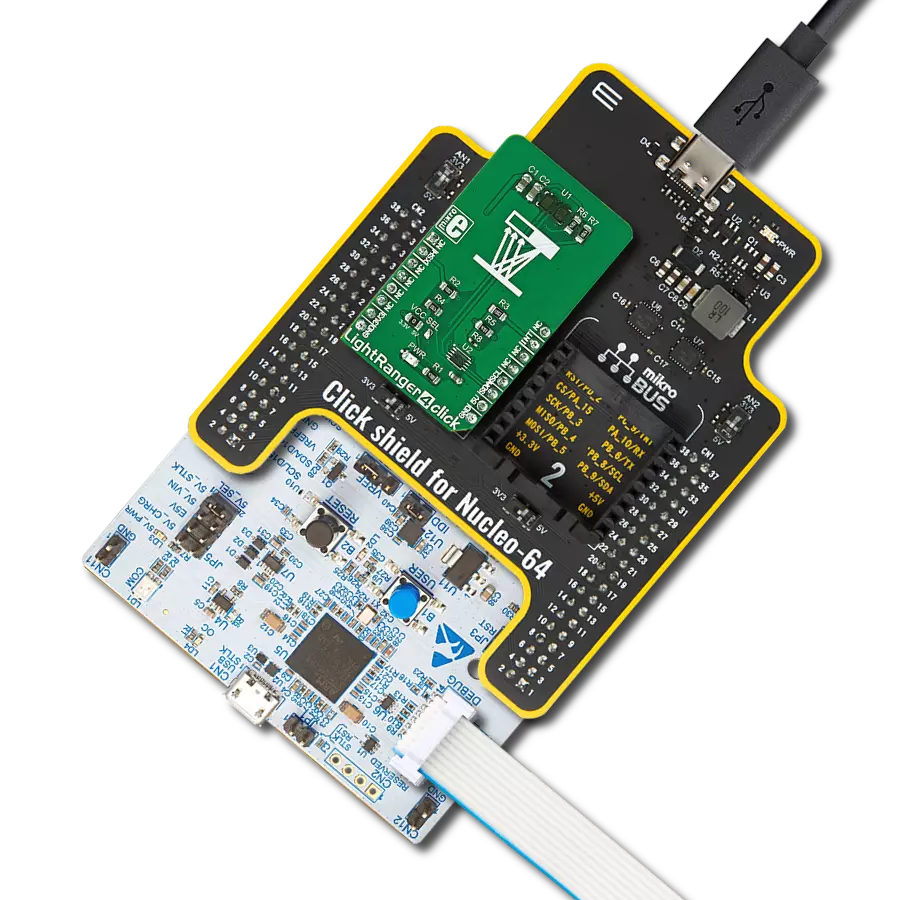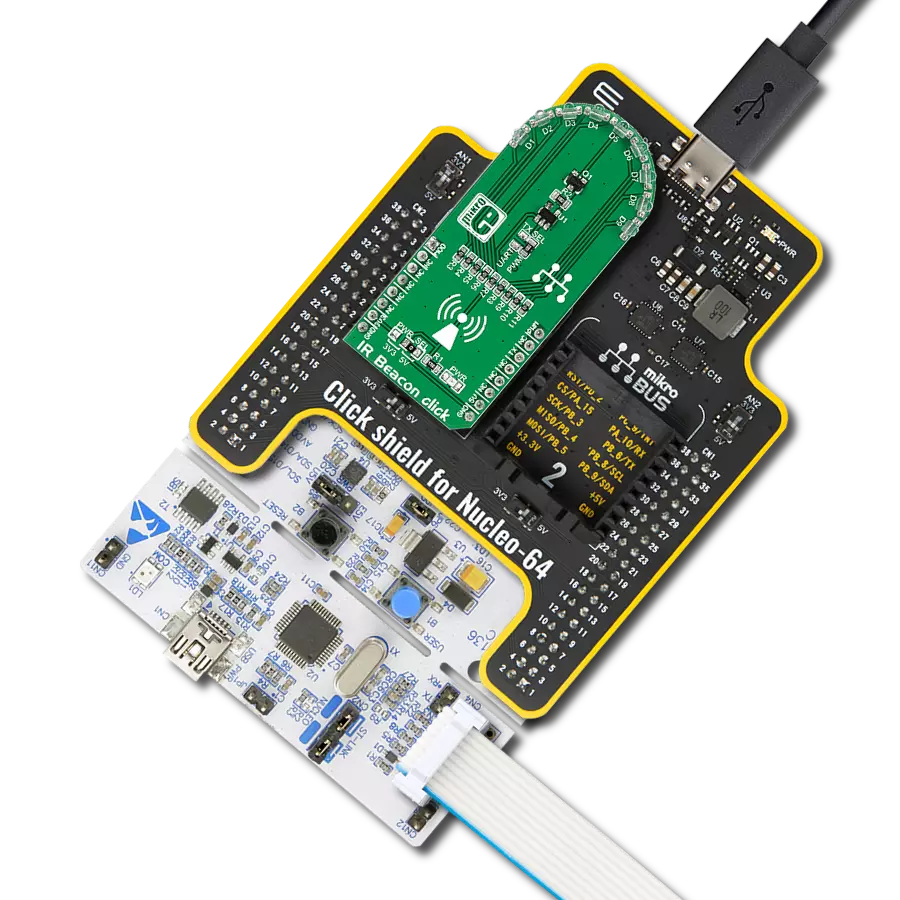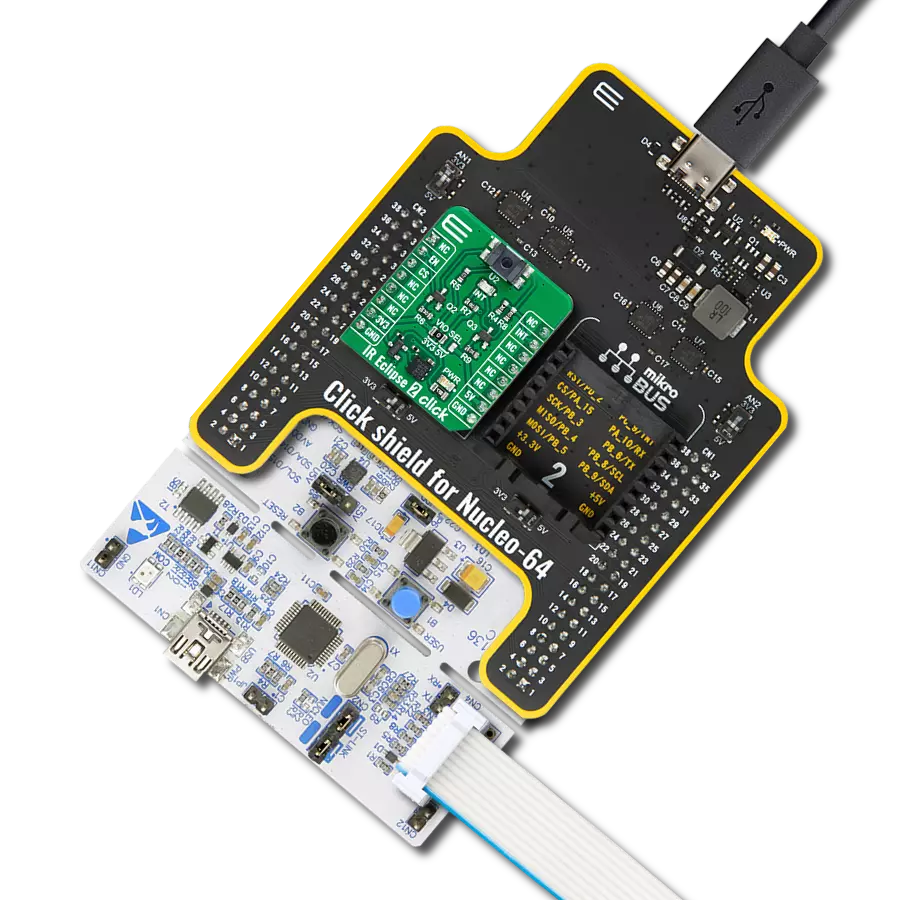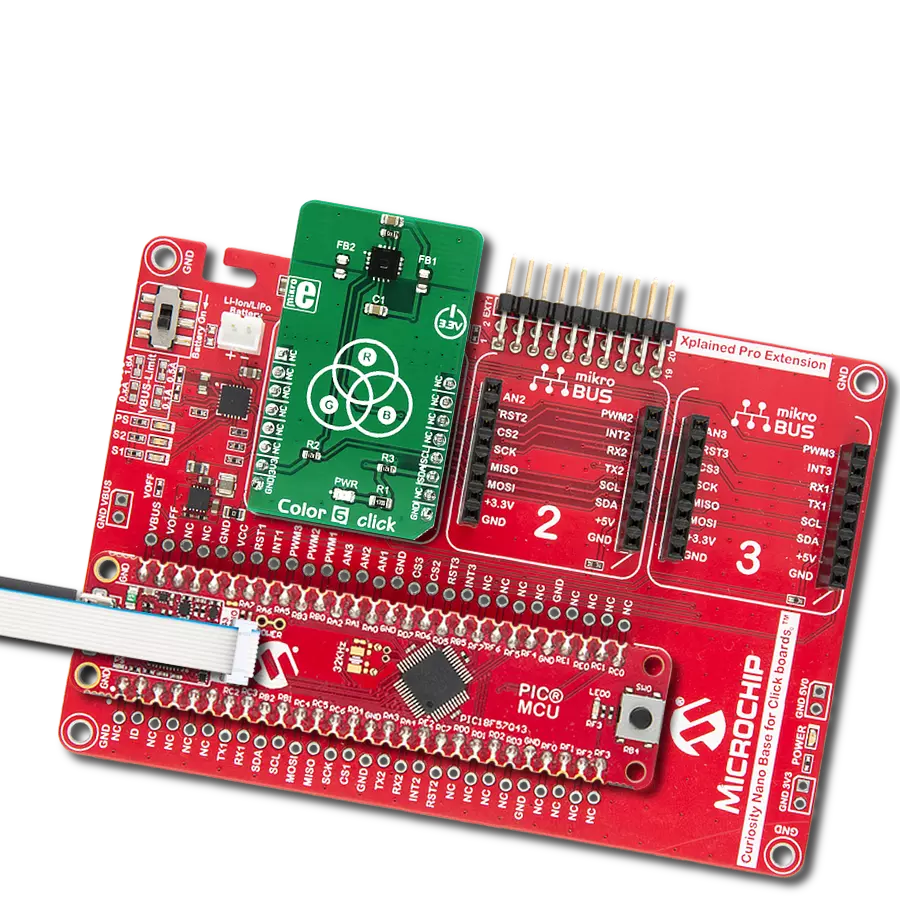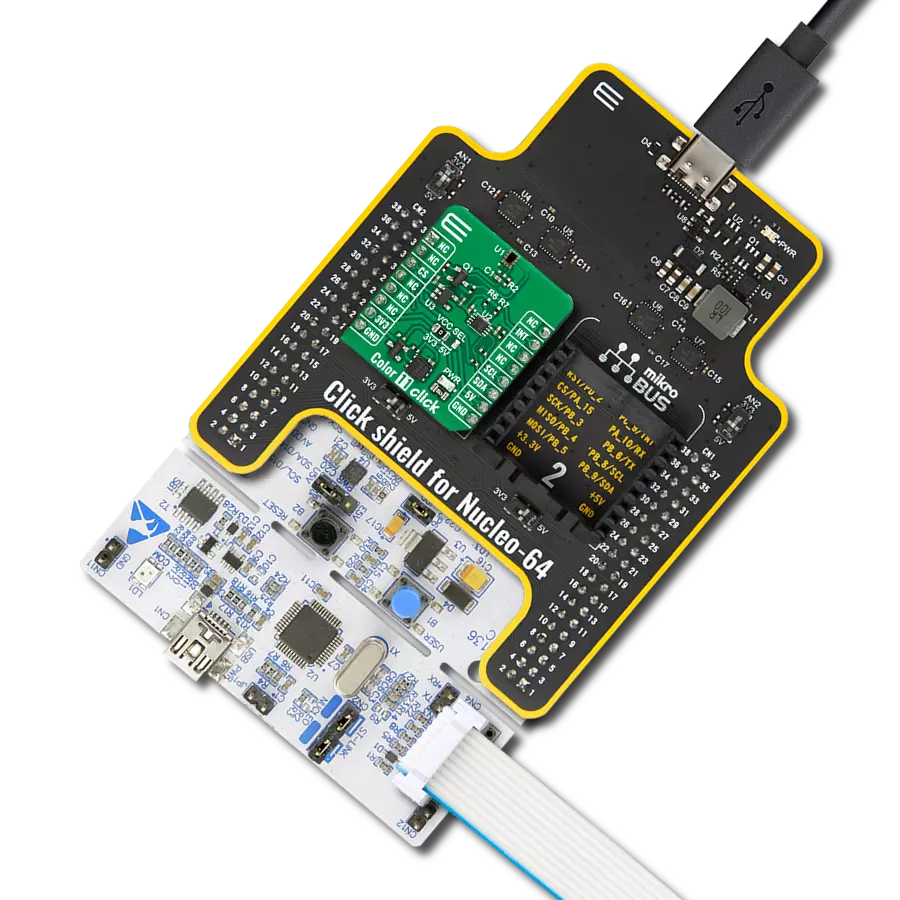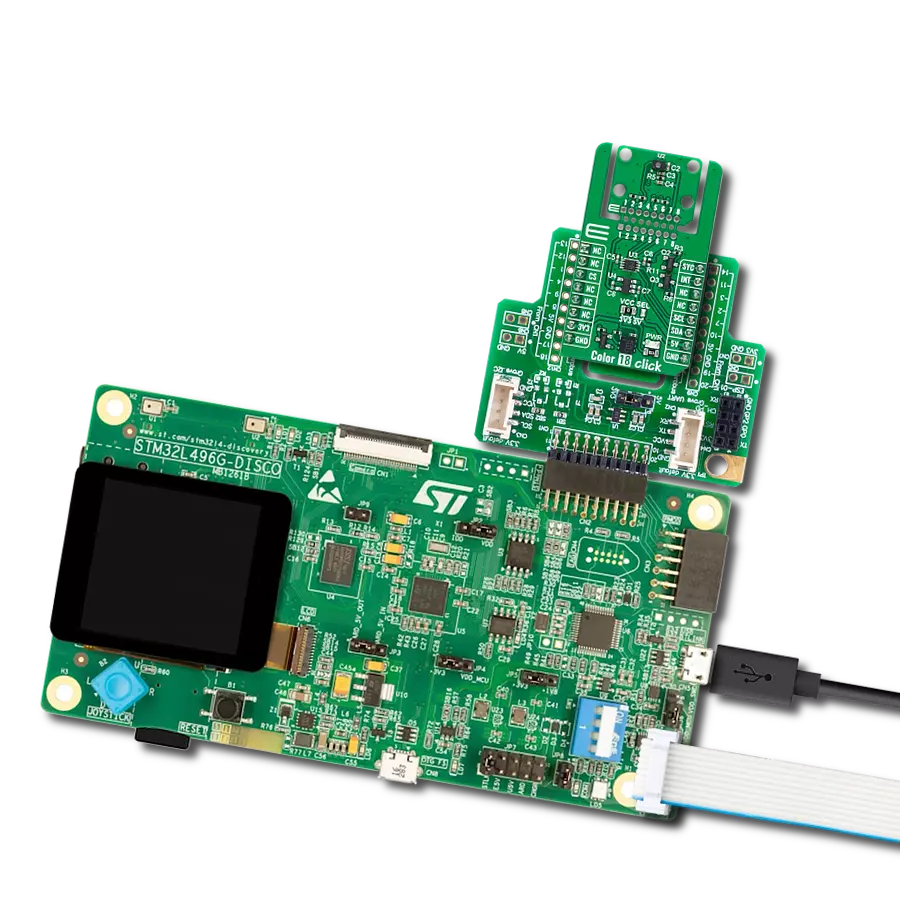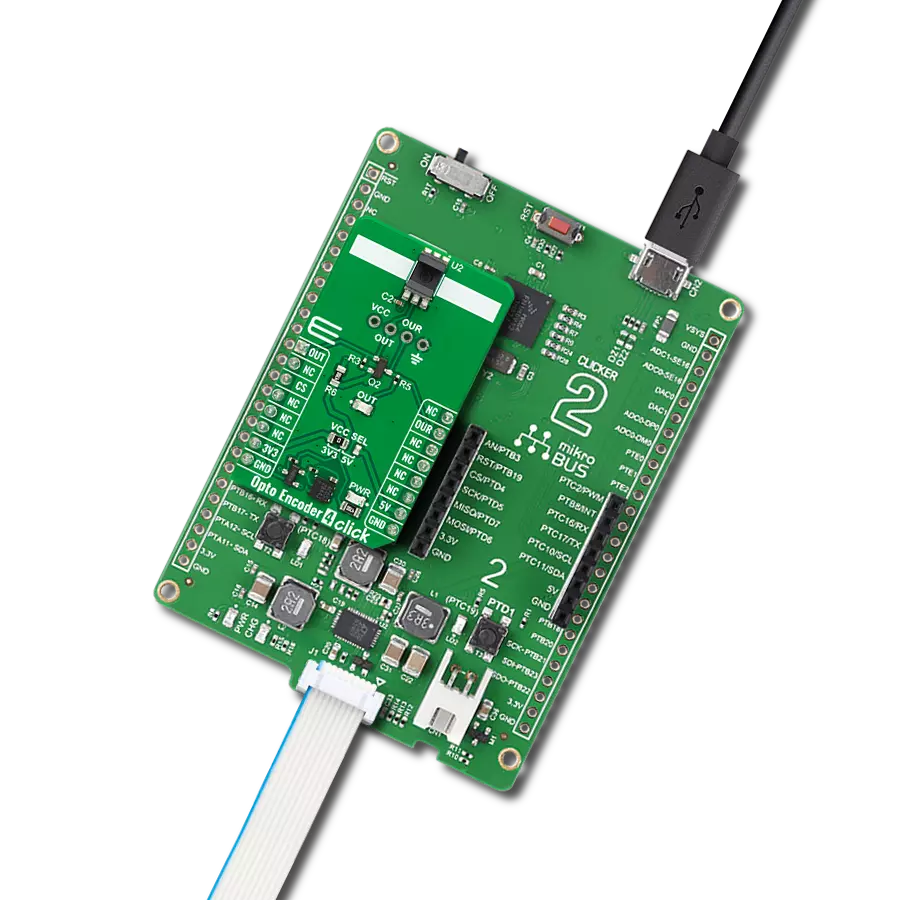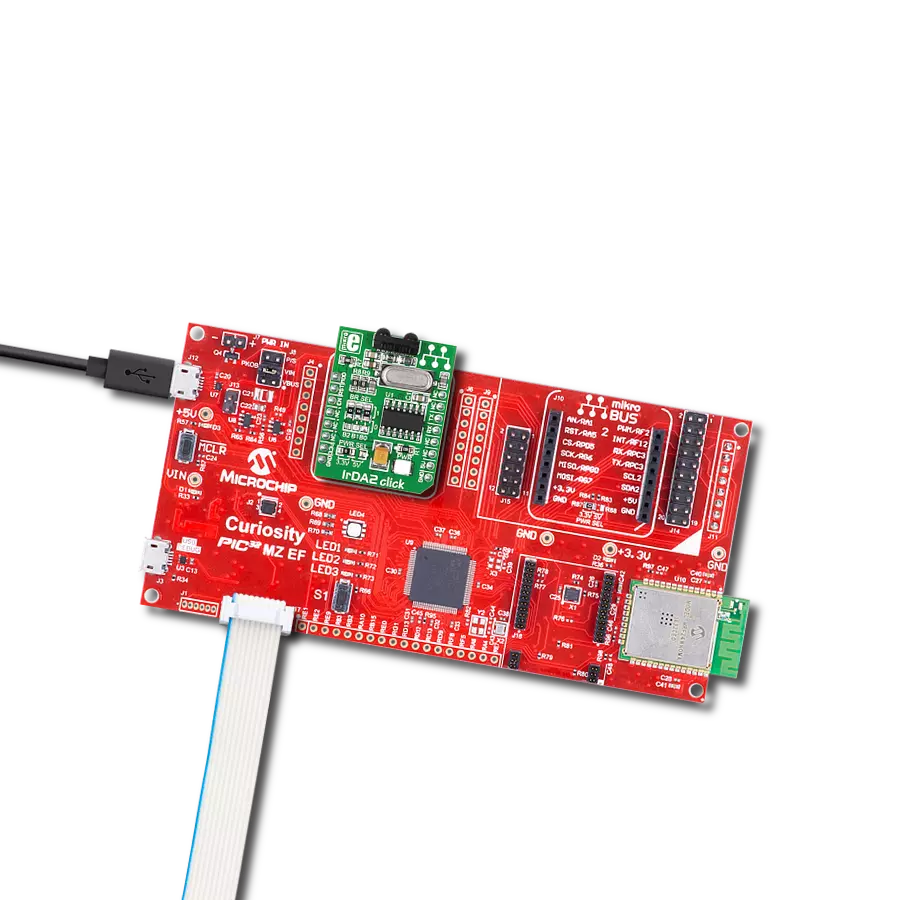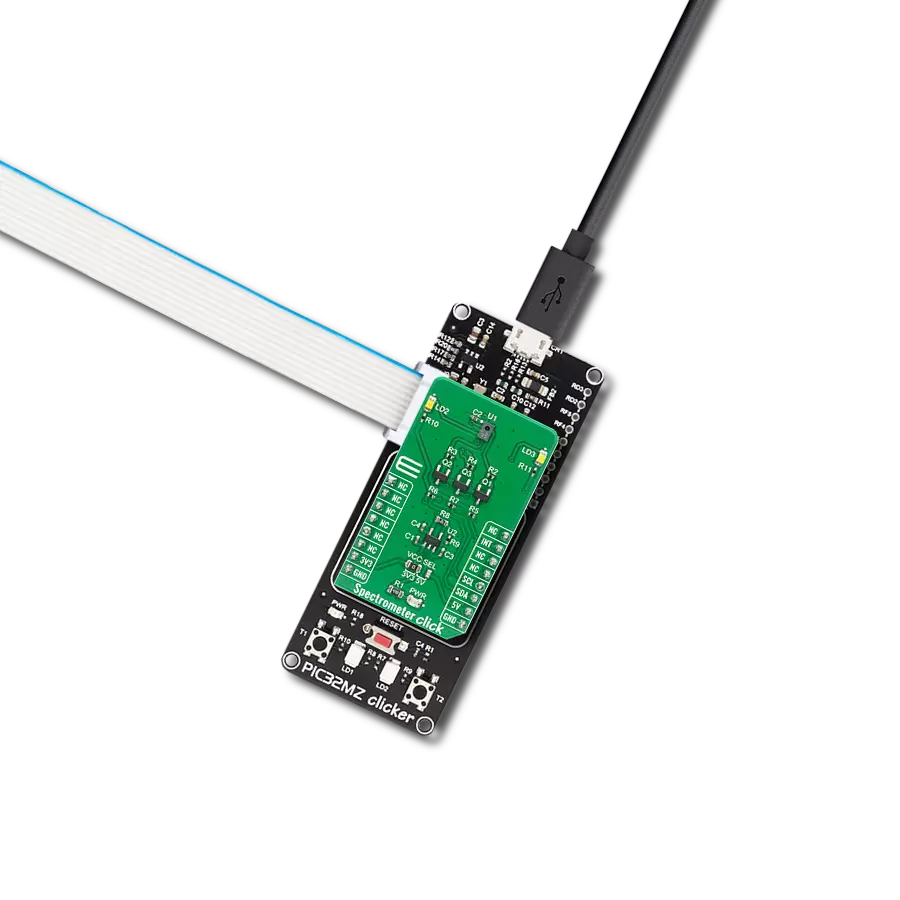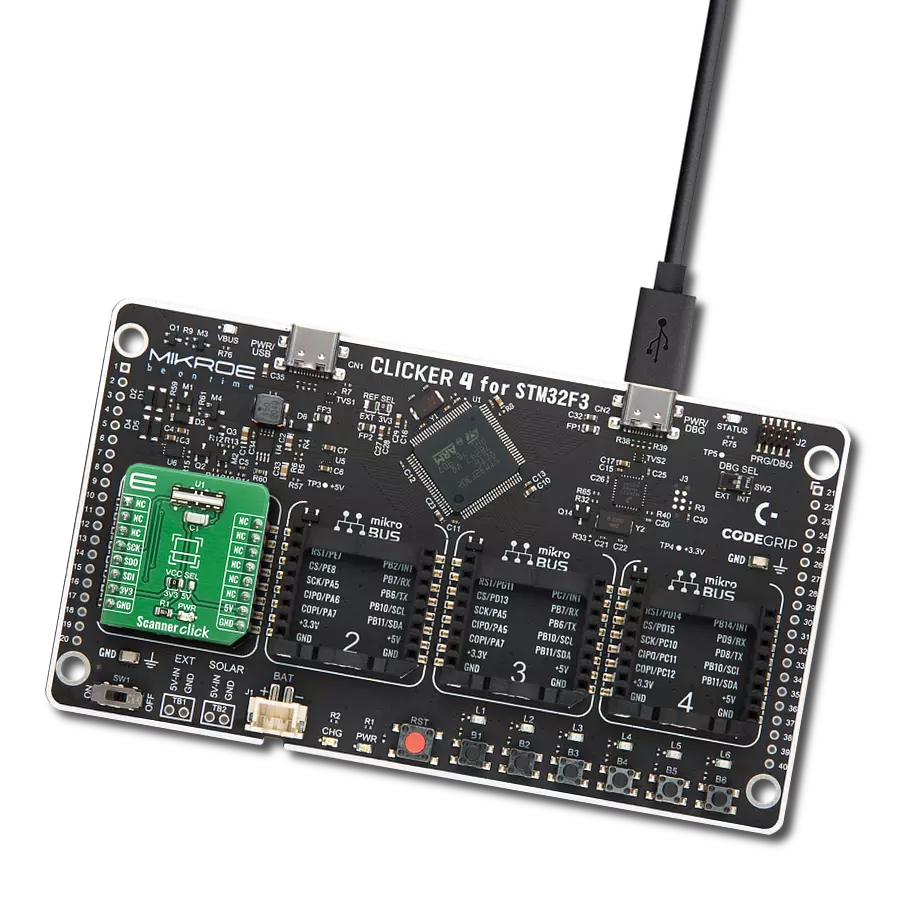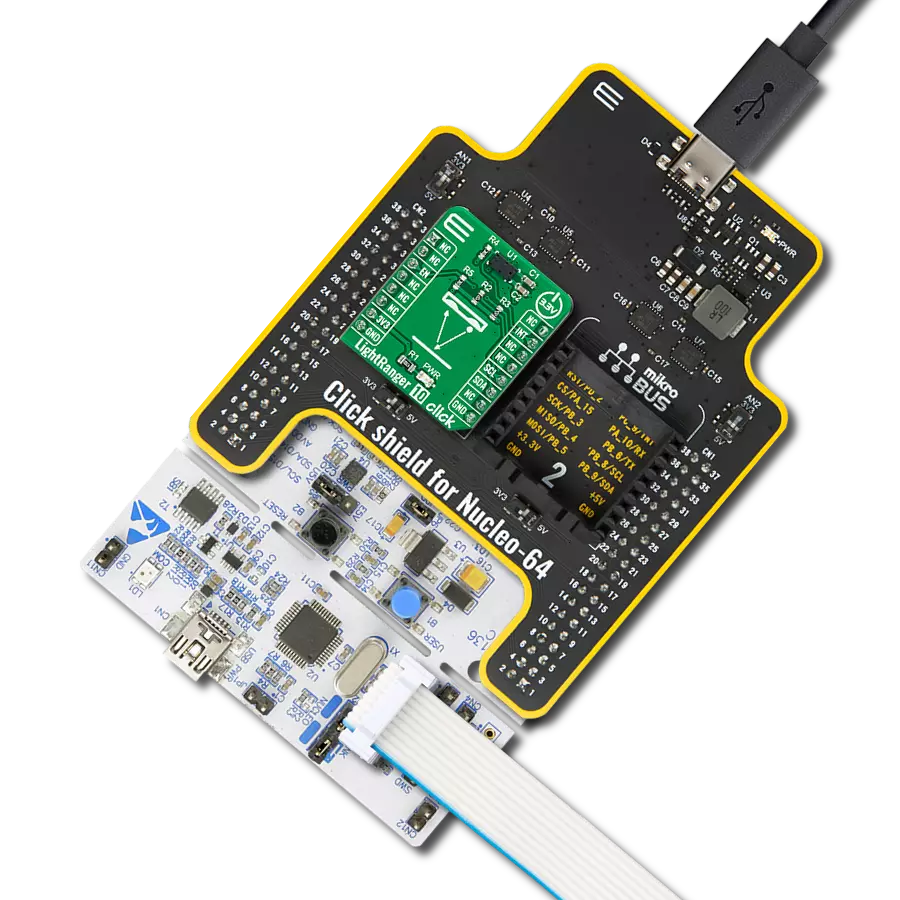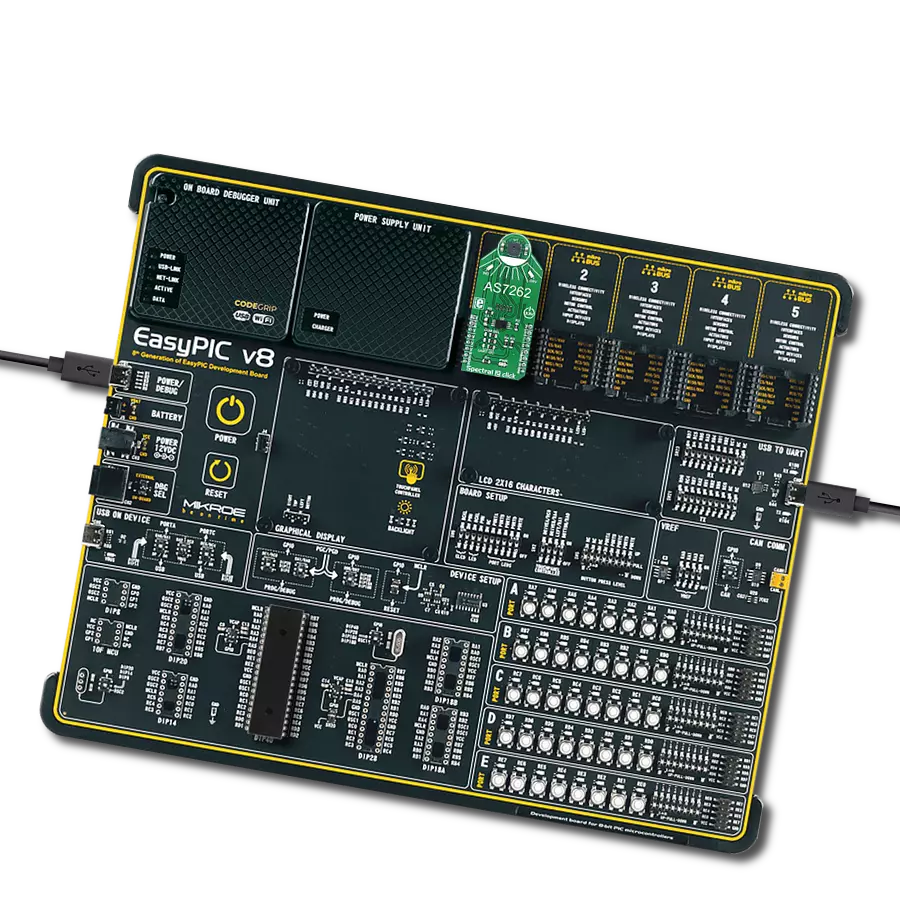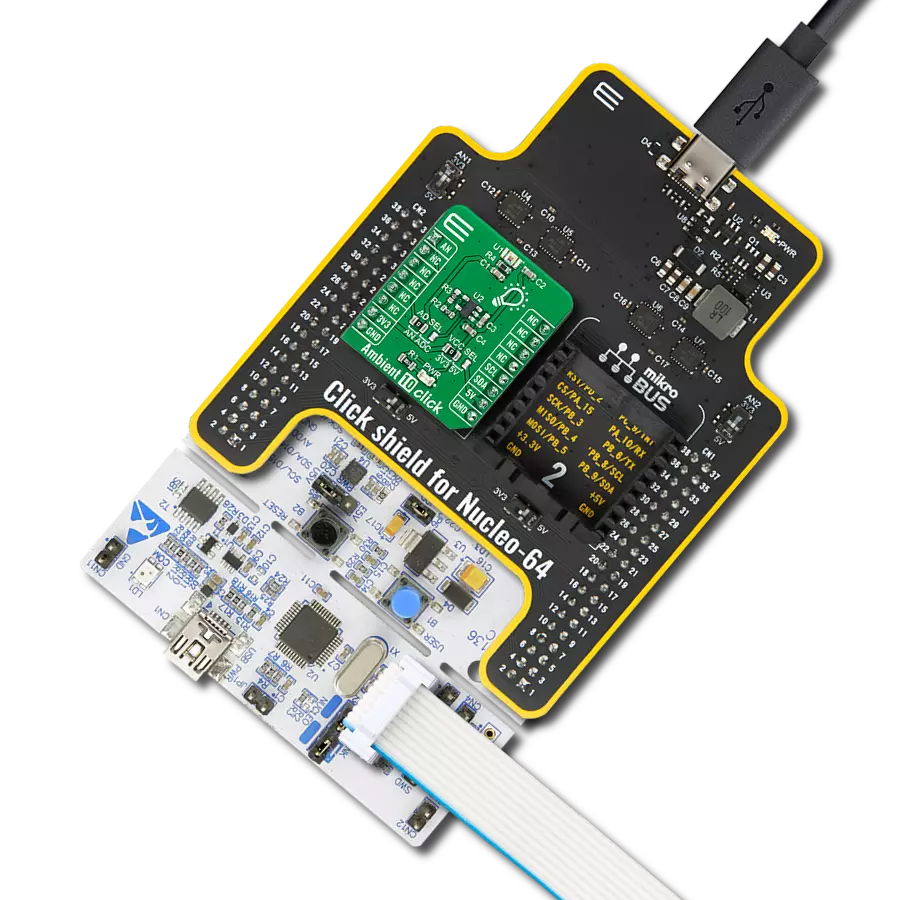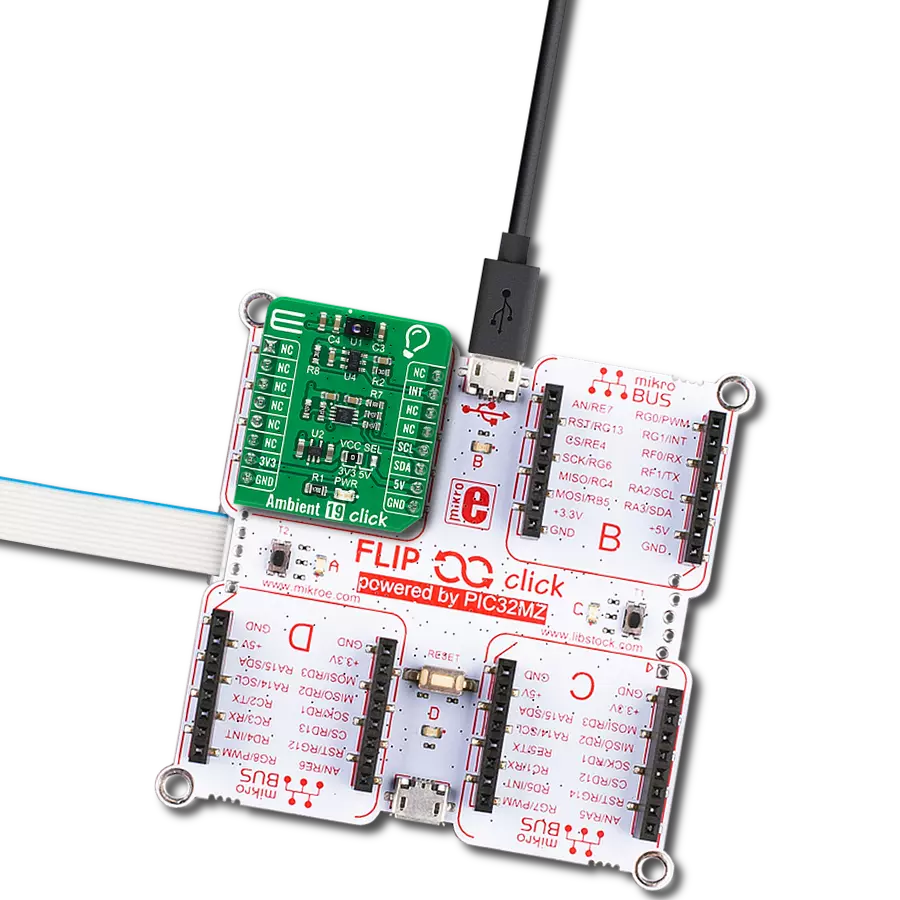Illuminate your surroundings with our UV intensity detector
A
A
Hardware Overview
How does it work?
UV Click is based on the ML8511A, an ultraviolet light sensor suitable for acquiring UV intensity indoors or outdoors from Rohm Semiconductor. The ML8511A is equipped with an internal amplifier converting photocurrent to voltage depending on the UV intensity working with a wavelength between 280-390nm (sensitive to UV-A (315-365nm) and UV-B (280-315nm) rays). After that, the MP8511A outputs an analog signal concerning the detected amount of UV light (mW/cm2). The output signal of the ML8511A can be converted
to a digital value using MCP3201, a successive approximation A/D converter with a 12-bit resolution from Microchip using a 3-wire SPI compatible interface, or can be sent directly to an analog pin of the mikroBUS™ socket labeled as AN. Selection can be performed by onboard SMD jumper labeled as A/D SEL, placing it in an appropriate position marked as AN or ADC. Also, the ML8511A can be enabled or disabled through the EN pin routed to the RST pin of the mikroBUS™ socket, hence, offering a switch
operation to turn Active or Stand-by mode of operation depending on the set logic level. This Click board™ can be operated only with a 3.3V logic voltage level. The board must perform appropriate logic voltage level conversion before using MCUs with different logic levels. However, the Click board™ comes equipped with a library containing functions and an example code that can be used, as a reference, for further development.
Features overview
Development board
PIC18F57Q43 Curiosity Nano evaluation kit is a cutting-edge hardware platform designed to evaluate microcontrollers within the PIC18-Q43 family. Central to its design is the inclusion of the powerful PIC18F57Q43 microcontroller (MCU), offering advanced functionalities and robust performance. Key features of this evaluation kit include a yellow user LED and a responsive
mechanical user switch, providing seamless interaction and testing. The provision for a 32.768kHz crystal footprint ensures precision timing capabilities. With an onboard debugger boasting a green power and status LED, programming and debugging become intuitive and efficient. Further enhancing its utility is the Virtual serial port (CDC) and a debug GPIO channel (DGI
GPIO), offering extensive connectivity options. Powered via USB, this kit boasts an adjustable target voltage feature facilitated by the MIC5353 LDO regulator, ensuring stable operation with an output voltage ranging from 1.8V to 5.1V, with a maximum output current of 500mA, subject to ambient temperature and voltage constraints.
Microcontroller Overview
MCU Card / MCU

Architecture
PIC
MCU Memory (KB)
128
Silicon Vendor
Microchip
Pin count
48
RAM (Bytes)
8196
You complete me!
Accessories
Curiosity Nano Base for Click boards is a versatile hardware extension platform created to streamline the integration between Curiosity Nano kits and extension boards, tailored explicitly for the mikroBUS™-standardized Click boards and Xplained Pro extension boards. This innovative base board (shield) offers seamless connectivity and expansion possibilities, simplifying experimentation and development. Key features include USB power compatibility from the Curiosity Nano kit, alongside an alternative external power input option for enhanced flexibility. The onboard Li-Ion/LiPo charger and management circuit ensure smooth operation for battery-powered applications, simplifying usage and management. Moreover, the base incorporates a fixed 3.3V PSU dedicated to target and mikroBUS™ power rails, alongside a fixed 5.0V boost converter catering to 5V power rails of mikroBUS™ sockets, providing stable power delivery for various connected devices.
Used MCU Pins
mikroBUS™ mapper
Take a closer look
Click board™ Schematic

Step by step
Project assembly
Software Support
Library Description
This library contains API for UV Click driver.
Key functions:
uv_read_data- Read 12-bit UV data functionuv_set_poewr_mode- Set power mode function
Open Source
Code example
The complete application code and a ready-to-use project are available through the NECTO Studio Package Manager for direct installation in the NECTO Studio. The application code can also be found on the MIKROE GitHub account.
/*!
* \file main.c
* \brief UV Click Driver Example
*
* # Description
* This is a example which demonstrates the use of UV Click board.
*
* The demo application is composed of two sections :
*
* ## Application Init
* Configuration of the Click and log objects.
*
* ## Application Task
* Reads the result of AD conversion once per second and calculates
* the UV index based on that. Results are being sent to the USB UART
* where you can track their changes.
*
* \author MikroE Team
*
*/
// ------------------------------------------------------------------- INCLUDES
#include "board.h"
#include "log.h"
#include "uv.h"
// ------------------------------------------------------------------ VARIABLES
static uv_t uv;
static log_t logger;
static float uv_voltage;
static uint8_t uv_index;
// ------------------------------------------------------- ADDITIONAL FUNCTIONS
void application_callback ( uint8_t *message )
{
log_printf( &logger, "*** %s ***\r\n", message );
}
// ------------------------------------------------------ APPLICATION FUNCTIONS
void application_init ( void )
{
log_cfg_t log_cfg;
uv_cfg_t cfg;
/**
* Logger initialization.
* Default baud rate: 115200
* Default log level: LOG_LEVEL_DEBUG
* @note If USB_UART_RX and USB_UART_TX
* are defined as HAL_PIN_NC, you will
* need to define them manually for log to work.
* See @b LOG_MAP_USB_UART macro definition for detailed explanation.
*/
LOG_MAP_USB_UART( log_cfg );
log_init( &logger, &log_cfg );
log_info( &logger, "---- Application Init ----" );
// Click initialization.
uv_cfg_setup( &cfg );
UV_MAP_MIKROBUS( cfg, MIKROBUS_1 );
if ( SPI_MASTER_ERROR == uv_init( &uv, &cfg ) )
{
log_info( &logger, "---- Application Init Error ----" );
log_info( &logger, "---- Please, run program again ----" );
for ( ; ; );
}
uv_set_callback_handler( &uv, application_callback );
uv_device_enable( &uv );
Delay_ms ( 1000 );
uv_voltage = 0;
uv_index = 0;
log_info( &logger, "---- Application Init Done ----\r\n" );
}
void application_task ( void )
{
if ( SPI_MASTER_ERROR != uv_read_adc_voltage( &uv, &uv_voltage ) )
{
uv_calc_index( &uv, uv_voltage, &uv_index );
log_printf( &logger, " UV Index [0-15] : %u\r\n", ( uint16_t ) uv_index );
log_printf( &logger, " UV ADC Voltage [V] : %.2f\r\n", uv_voltage );
log_printf( &logger, "------------------------------\r\n" );
}
Delay_ms ( 1000 );
}
int main ( void )
{
/* Do not remove this line or clock might not be set correctly. */
#ifdef PREINIT_SUPPORTED
preinit();
#endif
application_init( );
for ( ; ; )
{
application_task( );
}
return 0;
}
// ------------------------------------------------------------------------ END
Additional Support
Resources
Category:Optical



















